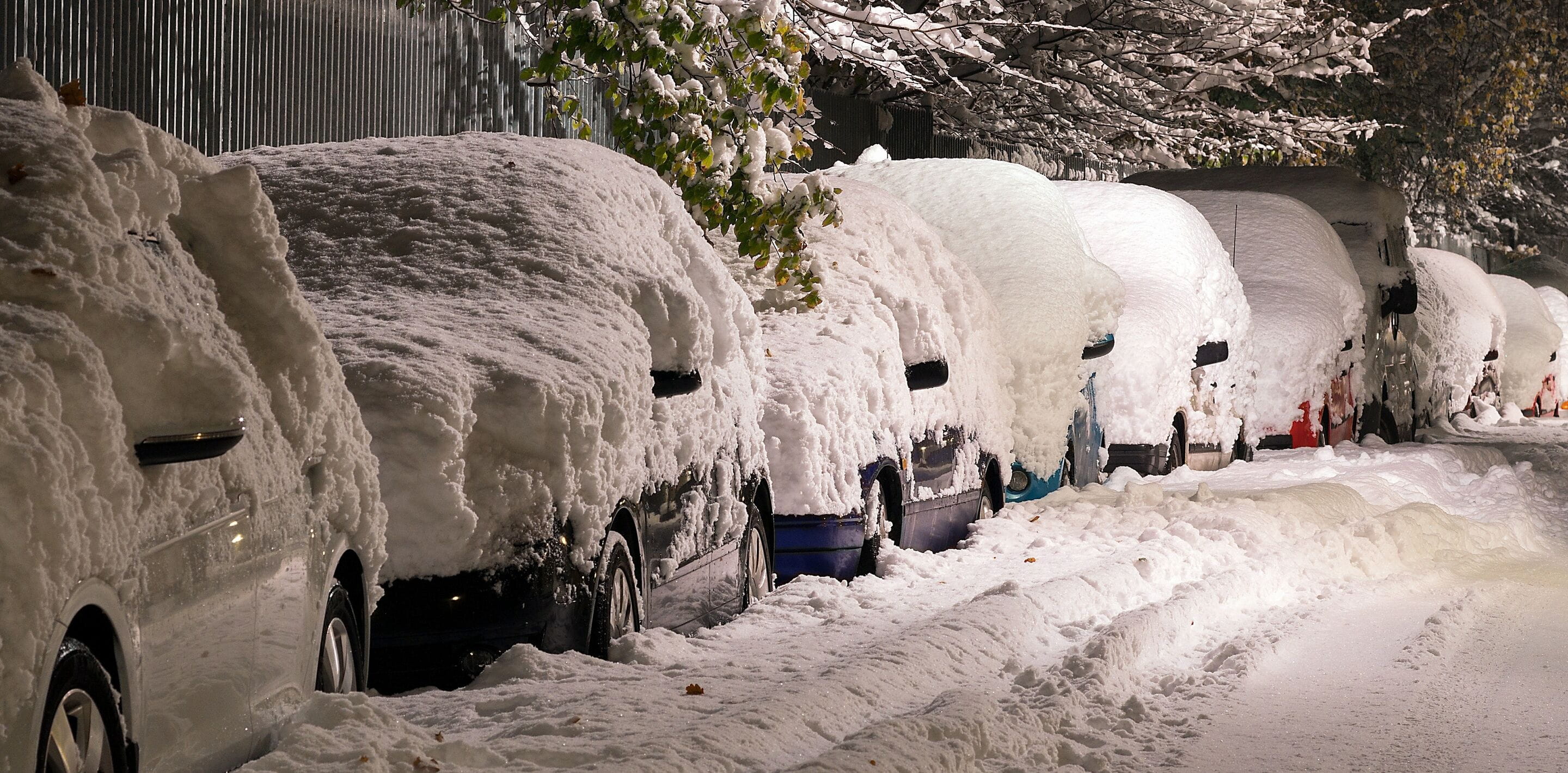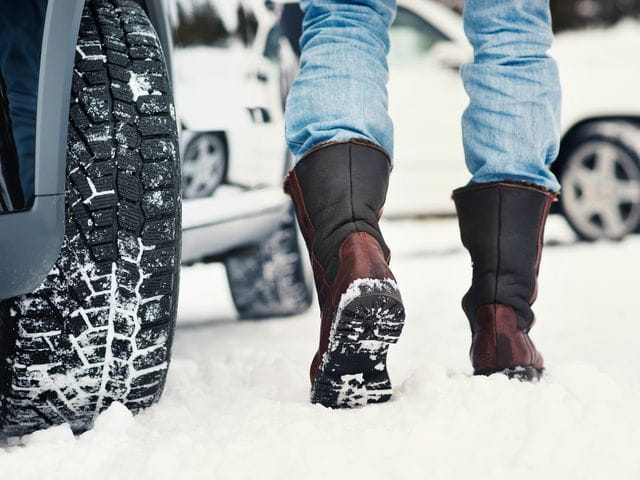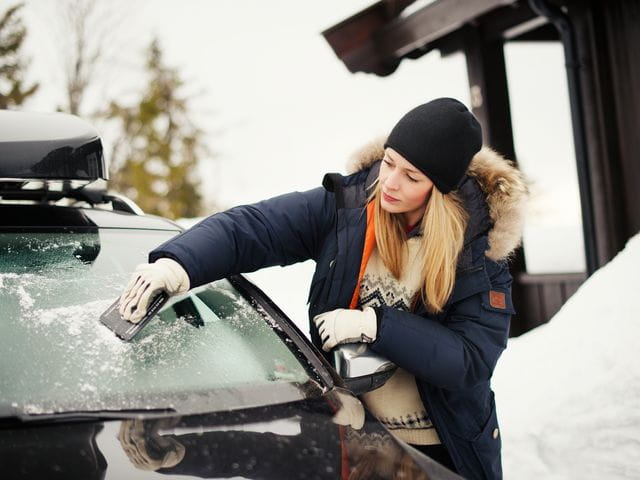
With these tips, you can steer your car safely through the winter
Winter is just around the corner. That means dark rush hours, wet and slippery roads, and scratching windows in the freezing cold. We all know it's best to switch to winter tyres and put anti-freeze in our car. But how do you steer your car, and yourself, safely through the freezing temperatures and wet, Belgian winter weather? With these tips, you can hit the snowy roads safely and with confidence and make even a winter's drive a pleasure.
1. Keep your car warm and dry
Whether you drive a combustion engine, a hybrid or an electric car, your car needs a warm and dry place. Do you have a garage? Keep your car inside during the winter months. If you do have to park outside, choose a place with lots of sunlight. This is especially important for electric cars. Cold temperatures are not good for the range. The lower the temperature, the lower the performance. A warm battery will go a long way.
2. Take care of your windows
Scratching ice in the freezing cold is not only annoying, it's also not good for your car windows. The best way to protect your windows is to place a sturdy piece of cardboard between the windscreen wipers and the window. That way they don't stick together. Do not pour hot water on your frozen window as the big difference in temperature can cause your window to crack. Don't use your windscreen wipers to wipe the ice off your windscreen - use a de-icer instead! Want to stop your windows from freezing up? Rub a potato cut in half over your windscreen. Got a crack? Don't wait too long to repair it, because when it's freezing that little crack can turn into a big one.
3. Check your tyre pressure
Winter tyres or not, the right pressure can make a big difference. When the temperature drops, the air in the tyre shrinks and so does the pressure. The result is greater rolling resistance and higher fuel consumption. In the case of an electric car, this also means a shorter range. So always check your tyre pressure when it gets colder, and also when the weather gets warmer.
4. 4. Do not let your engine run unnecessarily
Many drivers start the engine while clearing the windows of ice before they leave. It's better not to, because petrol and diesel consumption, and therefore harmful emissions, skyrocket at that moment. Due to the cold engine, the oil is still very viscous at winter temperatures, which results in very high consumption. So drive off immediately after you have started your car, because at freezing temperatures an engine only heats up after 4 km and only then reaches its normal consumption. In addition, the engine wears out more quickly when idling and warming up.
5. Efficient heating
During those cold winter months, you tend to turn up the heating immediately when you leave. But that uses a lot of fuel, especially in an EV. An efficient way to warm yourself and save battery is to lower the general heating and turn up the seat and steering wheel heating. That is, if you have one. But if you choose an EV, this option is already worth the investment. Has your cabin warmed up in the meantime? Then turn off the seat heating so that you do not heat up unnecessarily. It is also best to turn off the air conditioning in time to save energy.
6. Plan your charging times smartly
A crucial winter tip for electric car drivers: be sensible about when you charge. Most EVs allow you to set a time for departure. This allows the battery and cabin to warm up gradually while your car is still charging. By using this option, you ensure that the battery is at the right temperature so that you can start your journey with optimum battery power. Can't precondition your car? Then make sure your battery has more than 20% of its maximum charge capacity when you leave.
7. Avoid problems: drive slowly
Of course, it's better to drive slowly on a slippery, wet road. But driving slowly also has other advantages for EVs. If you drive 10 to 15 kilometres per hour below the speed limit, you keep the density of cold air low and the car experiences less resistance.
8. Stay calm on the road
Many drivers immediately cramp up when they have to drive in the snow. But don't panic: with the right braking and driving technique, there is no need to worry. Hold the steering wheel with both hands, brake gently and look far ahead. Increase your braking distance and do not accelerate too quickly. Certainly do not use cruise control, so that you remain in control of your car.
9. Regenerative braking
Due to regenerative braking your EV can recover energy and store it as electricity. This can be particularly useful in winter, when your car has less range. You can also use the system when driving downhill. You can often set the level of regenerative braking yourself. In the city, it is best to set it to the maximum; on the motorway, it is better to set it to the minimum.
10. Clear your car of snow
Snow on your roof and windscreen is not a good idea when driving a car. It disturbs your visibility. Also, when a lot of melting snow from the roof ends up on the windscreen, it can lead to dangerous situations. With an EV, it is even more important to keep your car free of snow: the snow degrades the aerodynamics of your car, which rapidly reduces its range. So get rid of the snow!
These tips will help you get your car through the harsh winter. No matter how careful you are, accidents do happen. Want to report damage or have your car repaired? Do you want to arrange a service quickly or do you need new tyres? You can ask for this quickly and easily via My LeasePlan!




